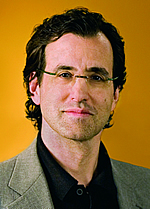|
Issue Contents :: Inside Oberlin
A Course for Oberlin’s Future
 Approval of Oberlin’s Strategic Plan is a milestone. Culminating an 18-month campus-wide effort, it sets a course of action to strengthen the educational and financial future of Oberlin College. By defining our mission, goals, and strategic directions, the Strategic Plan is now guiding our planning efforts and providing a framework for our decision making. Approval of Oberlin’s Strategic Plan is a milestone. Culminating an 18-month campus-wide effort, it sets a course of action to strengthen the educational and financial future of Oberlin College. By defining our mission, goals, and strategic directions, the Strategic Plan is now guiding our planning efforts and providing a framework for our decision making.
With broad support from the faculty and Board of Trustees, the plan builds upon Oberlin’s significant progress during the last 10 years under the leadership of President Nancy Dye. The plan’s overarching goals are straightforward and ambitious: enhance the value of an Oberlin education to achieve academic, artistic, and musical excellence; enhance Oberlin’s reputation and the perceived value of an Oberlin education to broaden and strengthen Oberlin’s appeal; and attain financial sustainability. You can find the Strategic Plan online at www.oberlin.edu/oam.
To accomplish these goals, the Strategic Plan identifies specific objectives: focus and strengthen the educational experience; support and build the faculty; build campus community; internationalize Oberlin; move toward environmental sustainability; and identify key academic priorities.
The planning effort was led by a Strategic Planning Task Force that involved the active participation of Oberlin’s many stakeholders: faculty, trustees, alumni, students, and staff. Each worked to ensure that all points of view were well represented. Leanne Wagner ’76, the immediate past president of the Alumni Association, served on this task force, as did nine College trustees, all of them Oberlin alumni. In September 2004, more than 100 members of the Alumni Council took part in a strategic planning workshop, the outcome of which was shared with the Task Force.
Once the Strategic Plan was formally adopted last spring, attention promptly turned to the hard work of implementation. Already, six campus working groups, led by faculty and senior staff, are determining how best to implement the plan’s strategies. To keep alumni informed of their progress, each working group has an alumni liaison who reports back to the Alumni Council’s Executive Board.
Concurrently with adoption of the Strategic Plan, the Board of Trustees unanimously approved a carefully constructed five-year Financial Plan to enhance each of Oberlin’s revenues streams, manage operating expenses, gradually reduce the endowment payout rate, and address capital needs. The College must build both its annual fund and endowment in order to sustain its important commitment to financial aid, address infrastructure needs, and fully implement the Strategic Plan.
The Board of Trustees is focusing its time and energy on achieving the goals of the Strategic and Financial Plans. Let me give you a few examples:
We are working with President Dye and her staff to develop a comprehensive marketing and communications plan to improve perceptions of Oberlin’s mission, program, and distinctiveness, and to broaden and strengthen Oberlin’s appeal.
To build community, we are helping to develop and implement a broad-ranging plan to build and renovate campus residence halls. This fall, we opened a new 132-bed housing complex, and plans are under way for new housing to open in fall 2008.
To attain financial sustainability, we are working with the president and the development staff to begin planning for a future capital campaign.
The active engagement of our Alumni Association, under the leadership of its president, Wendell Russell ’71, is critical to our success. The years ahead present an unprecedented opportunity for us all to work productively and imaginatively toward common goals. I hope you will join me; I welcome your thoughts and suggestions.
Robert S. Lemle ’75
Chair, Oberlin Board of Trustees
|





